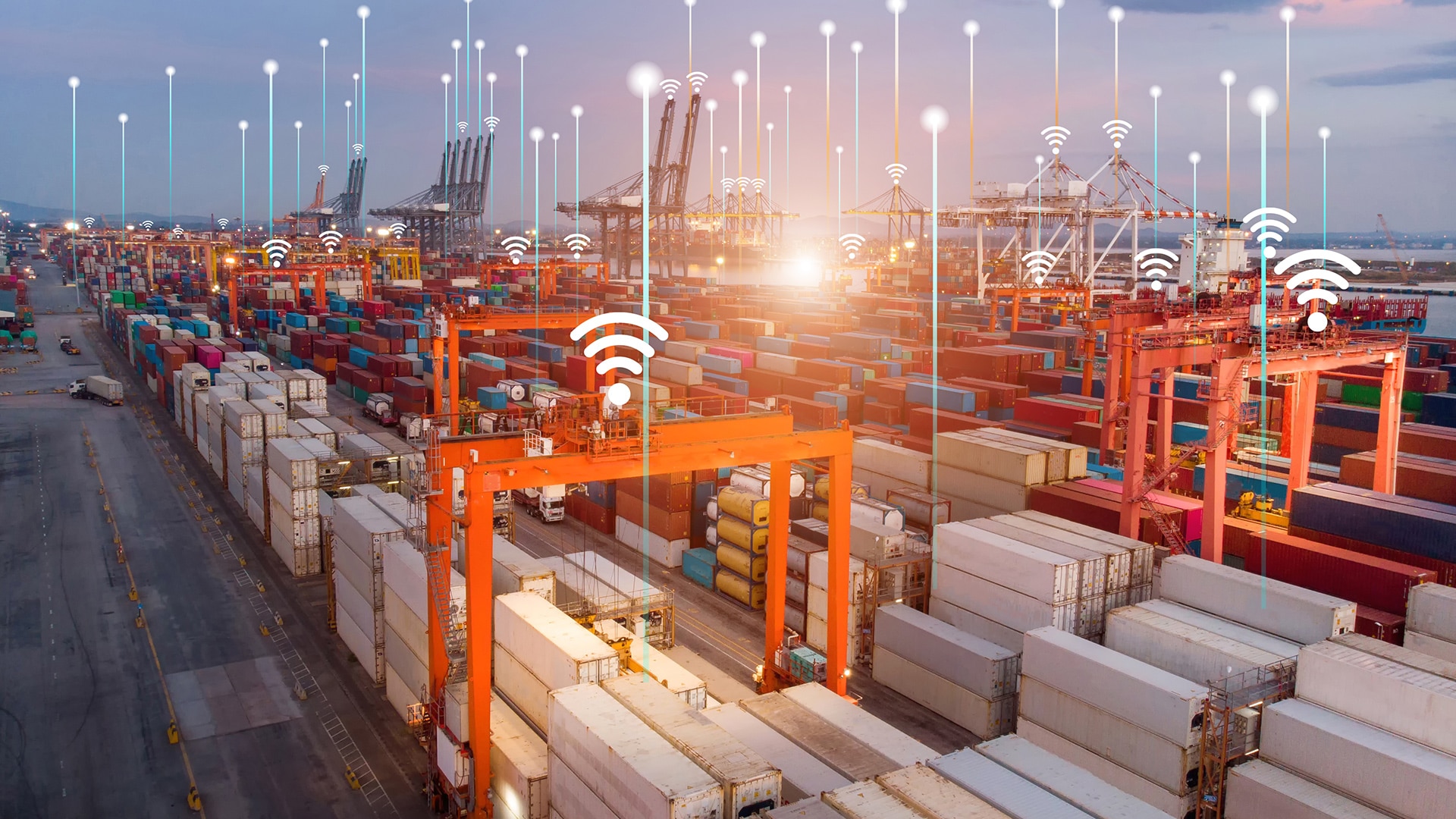Ports See the Benefits of Real-Time Monitoring to Drive Efficiency
The ports of today are changing.
A combination of increasing competition for shipping container/passenger cruise business, technological innovation and sustainability are all three key influences affecting ports and their plans for expansion.
New trade routes are opening and there is increasing recognition within the maritime sector for the crucial role played by technology, specifically the advantages of using Artificial Intelligence (AI) and big data. However, ports are also understanding the importance of environmental monitoring control with an enhanced focus on sustainability.
In this article, we explore why environmental monitoring is important as ports expand their operations; and how, by using smart digital data alerts and other tools ports can gain a vital competitive edge.
Your environmental monitoring at your fingertips!
Optimize your environmental monitoring, become smarter and more sustainable with a unified system that gathers all your environmental sensors & data in one place.

Why Are Environmental Monitoring Systems (EMS) important for Smart Ports?
Global maritime trade reduced in 2020 due to the COVID-19 pandemic. As the world economy recovers, forecasts project a return to a growth in demand for shipping cargo containers and passenger cruise traffic. New shipping routes and new ports are emerging – and existing ports are seeking to build capacity.
This escalation in demand is intensifying the risk of pollution, as increased offshore and onshore traffic from road and rail transportation brings more pollution and noise.
Increasing volumes of shipping traffic results in problems created by ships’ engine noises, contaminated water and sediment around ports. The geographic scope for ports is expanding too due to offshore maritime activities such as windfarms.
This has implications for air and water quality. Ports understand the need to become smarter and greener – but may lack the tools to achieve this as they seek to balance commercial viability whilst addressing environmental concerns.
Environmental concerns are a key factor for ports, driven by regulations at a national or international level, as well as expanding public awareness. Local populations are looking for port authorities to act through sustainable development. Smart Ports are responding with plans to achieve carbon neutrality – La Rochelle port in Western France being just one example – as efforts gather speed to protect precious marine and coastal ecosystems from pollution. Similarly, the Port of Valencia in Spain is installing sensor networks with its partner ports to assemble environmental data with the objective of promoting a sustainable circular economy[1].
[1] https://www.ship-technology.com/features/green-team-ports-leading-shipping-sustainability-drive/
Challenges to Performing Effective Environmental Monitoring Systems
Port operators need to identify, measure and monitor several environmental impacts, both within the port and its immediate vicinity. Priority indicators for environmental monitoring include air quality (e.g., dust, small particles and SO₂), water quality (turbidity, sediment, temperature change, acidity PhD and oxygen levels), aerial noise and importantly, marine life impacts. Yet, a lack of connectivity within a port administration can make this work difficult, with limited communication and a restricted focus on narrow data sampling and testing, thus impeding effective environmental monitoring.
In 2021, for the most part, data collection relies on traditional paper systems, leading to a timescale of around 2-4 days before a port authority can obtain results from a data monitoring exercise.
A major challenge for port authorities is how to find efficient and effective ways of understanding the root cause of the pollution.
Noise pollution is a case in point.
Local communities are extremely sensitive to the issue of noise and ports need to establish where the problem is coming from, such as from shipping vessels or trucks entering and leaving the port.
These problems have the potential to reduce a ports’ ability to measure its’ environmental impact because of expanding activities – and make it less competitive as across the world Smart Ports rise to this challenge through embracing the use of technology and digital data solutions.

The Solution for Ports: Smart Digital Alerts
Today we can see the benefits of using intelligent data monitoring all around us. Householders can buy their own sensors to monitor air quality around their home; and then compare this with global data easily available on the internet. They can then see if it is related to cars, to planes, to boats etc. We are similarly seeing significant progress in the monitoring of water quality too.
The widespread benefits from harnessing technology are apparent for ports as well – real-time data solutions which assist port authorities to become smarter and in control.
What is the solution?
A digital alerting system using data from sensors connected to a bespoke platform that collects and analyzes the data so that it is easily interpretable.
The Sinay Hub is that solution: designed for continuous and real-time monitoring to reduce your impact on the environment while improving operational efficiency. It is a fully integrated system based on several modules ready-to-use, bringing all a port sensors’ data together in a single digital place.
By using the Sinay Hub, port authorities instantly have access to their own smart alerting system: helping ports to understand what is important – and what is not.

The Benefits of Using the Sinay System
There are numerous benefits of using the Sinay Hub.
We can connect our systems to any kind of sensor and different types of data. Sinay can work with a range of data sets to adapt them to a local situation. For example, turbidity is high for some estuary ports in the South West due to the high tides (e.g., Gironde, Bordeaux). We can change the parameters due to the marine environment changing all the time; in some other ports the turbidity though may not be as high. Furthermore, if the regulations are different, Sinay can change them to consider local context, laws, sensors etc.
Accessing real-time data to monitor environmental impact is a particular advantage. Compared with the old-fashioned paper systems, Smart Ports have the data at their fingertips. This enables authorities to adopt smarter pollution monitoring and manage logistics more effectively, for example anticipating more accurately containership movements.
The result is an optimized maritime trade supply chain, within a closely monitored environment.
With this new way of digital working, the Sinay Hub solution reduces the time to comply with regulations – and the potential for fines should a port authority breach any form of environmental regulation.
Ports are discovering the rewards of using smart digital alerts to monitor and manage environmental impacts promptly, minimizing the risk to our ocean seas and marine life – and developing a competitive edge.
Find Out More
If you are interested in how we can help your port to become smarter, our Sinay expert team is here to help and answer your questions.
We can work with port authorities and their stakeholders with a workshop, defining the operational plan and developing an EMS.
We can install our ready to use Sinay Hub modules quickly and efficiently for ports who have an EMS in place.
Please contact us to discover more.
Call us: +33 (0)2 50 01 15 50
or email us at: [email protected]
Fequently Asked Questions About: ENVIRONMENTAL MONITORING SYSTEMS AND SMART ALERTS
The four types of environmental monitoring are: air quality, water quality, noise quality, and biodiversity monitoring.
An environmental monitoring systems monitor the quality of the environment in real-time.
The 5 key environmental indicators are: biodiversity, food production, global CO2 levels/surface temperature, human population, and resource depletion.
We do environmental monitoring either by taking samples by hand and testing for pollution levels, or by using software connected to real-time sensors which measure pollutants.
We do environmental monitoring because we must ensure human health, marine and wildlife health, and comply with environmental standards.
The benefits of environmental monitoring are: environmental compliance, ensures human and animal health, gains community support, helps policymaker decisions, and prevents environmental damage.
Smart alerts are notifications when data values change.





